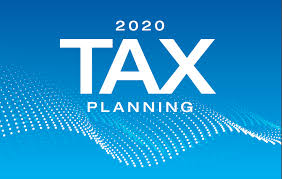2020 Year-End Tax Planning Strategies
Year-End Tax Planning Strategies With less than 90 days left in the year Accountants in Miami are busy with new laws and changes brought on by the Covid-19.
New laws and the rapidly changing environment brought on by the Covid-19 pandemic present new tax challenges. Accountants in Miami walkthrough year-end income tax, estate tax, and real property tax planning.
YEAR-END TAX PLANNING environment in the latter half of 2020 presents new challenges.
There are new tax laws and government programs generally aimed at helping taxpayers. Yet there are also prospects of tax increases, federal and state, particularly on the wealthy.
In this rapidly changing environment, we must remember “other taxes” in our year-end planning, such as gift and estate taxes, even property taxes.
They encourage accountant to remember some “old favorites” of estate planning, family limited partnerships and GRATs, and the importance of property tax planning.
While we stress considering all the taxes and their relationships, we begin with the traditional emphasis in Year-End Tax Planning —the income tax.
YEAR-END TAX PLANNING AND INCOME TAX
Income tax planning, while often an integral part of estate planning, is particularly focused on annual accounting and tax preparation.
There are tax rate issues and progressive rates, year to year, and rate differences within the family, year to year.
There are issues of creating losses and whether those can be carried back to recover taxes paid at potentially higher rates in prior years.
Accountants argue that rules limiting the net operating loss carryback may be unfair. Year-to-year results may be unreasonable without the mitigation of carrybacks. An extreme example would be a million in taxable income on December 31 and a million-dollar tax loss the next day, which could leave the taxpayer having to pay tax on $1 million in the earlier tax year despite breaking even over two days.
Year-End Tax Planning for the federal response to the economic concerns associated with Covid-19 was 2020 legislation enhancing the taxpayer’s ability to carry back losses. California’s 2020 response was protecting state revenue by limiting the ability to carry back losses.
We are on the verge of a presidential election with major differences in the Trump and Biden approaches to taxation. One of the most notable aspects of the Biden proposals is that step-up at death to current value may go away, or at least be limited. The income tax rules governing basis or cost usually don’t tax heirs on unrealized gains before the decedent’s passing. This could change. There is also the prospect of income tax rate hikes as early as 2021, particularly on the wealthy, along with significantly higher capital gains taxes.
Also, most people’s economics have changed to some extent in 2020, as has the economics of the entities they own.
Year-End Tax Planning Entity planning is increasingly important in this environment of relatively low C corporation tax rates. In doing the math here, one must keep in mind C corporations don’t qualify for the 20% of business income deduction, which expires after 2025 under current law. Planning may also focus on avoiding pockets of losses within the C corporation which might otherwise offset income in the owner’s individual return.
The math and business planning (such as succession management) may be complicated but it needs to be done, keeping in mind the relationships and trade-offs in the multitude of taxes.
GIFT AND ESTATE TAXES ARE BECOMING MORE IMPORTANT
We do not want to forget proven planning concepts that benefit the high net worth business owner or investor.
Our topics are family limited partnerships and lifetime annuity trusts, traditional estate planning tools.
As we discuss such tax planning, keep in mind:
- Covid-19 may impact values, current, and future;
- Covid-19 may impact your family’s economic activities, needs, and general planning;
- values and exemptions are key factors;
- transfer tax exemptions are high in 2020 and not scheduled to revert to lower levels until after 2025;
- the presidential election could yield a higher gift/estate tax environment as early as 2021;
- the incidents of income taxation may shift; and income tax rates, including capital gains rates, may increase as early as 2021;
- state income taxes are often a significant factor; and
- there are some concerns California legislators may even look at reinstating a California estate tax.
- More than ever, there is much to weigh in our year-end tax planning.
Family Limited Partnerships in 2020 be the time to consider a family limited partnership for your family or clients?
The family limited partnership (FLP) has an important administrative role. Its central purpose is to provide a place for ownership and management. Typically, management initially vests in one or both parents. It accommodates the management of different types of assets.
The name denotes the ownership, which vests in the family, even if management is with a parent.
The FLP can potentially save income tax by spreading income among the family.
The greatest value is usually in the limited partnership interests which may be owned by the children. The parents sometimes keep an interest via the limited partnership interests or general partnership interests.
There is the “do the math” reminder on the planning checklist. Income may be subject to higher tax rates (federal and state) in the children’s returns, particularly if the successful parents have less income during retirement. There is often an income tax incentive, however, in shifting income out of the high-bracket return of the parents to the lower tax brackets of the children.
Keep in mind that income follows the ownership interest. After assets are transferred to the family limited partnership, income and deductions flow to the new owners via their interests in the partnership. Transfers into the FLP are usually tax-free. The old basis usually carries over to the partnership.
This doesn’t apply to earned income. Income earned by the parents can’t just be shifted for tax purposes by directing that earnings go to a child.
FLPs are primarily known for saving estate/gift taxes. A major benefit to the FLP is that it can be designed so that the ownership interests of the children can be discounted for valuation purposes. Why is that important? This is important in minimizing, hopefully avoiding, gift, and estate taxes on the parents or their estates. This results in more inheritance for the children.
There’s also the generation-skipping tax (GST) that can arise when parents are trying to minimize transfer taxes by skipping a generation, transferring assets to the grandkids. The GST may be an important element of the planning here.
Keep in mind that our gift/estate tax approach is a unified system. Lifetime gifts may use some of the transfer tax exemption that would be available at death.
Particularly if you believe the value of your business or investments is down temporarily, it may be a good time to take advantage of reduced valuations to reduce gift/estate tax impact.
It might be time to consider using the FLP as a vehicle to transfer business interests to the kids in anticipation of the eventual sale of the business.
The transfer tax system in 2020 exempts $11.58 million for each spouse. A couple is sheltered from gift or estate tax if the sum of lifetime and death time transfers total $23.,16 million, or less, focusing on 2020 exemptions.
The exemptions may increase modestly each year through 2025 when the transfer tax exemptions are scheduled to be cut in half. The IRS has acknowledged that it shouldn’t hurt taxpayers to take advantage of the temporary increase in gift and estate tax exemptions. Under current law, if lifetime gifts before 2026 are sheltered, this doesn’t hurt the gift giver who passes when the exemption is back to a lower amount.
There is also a “portability” concept wherein the unused exemption of the predeceasing spouse can help the survivor. When a spouse passes before 2026 and there is a relatively high amount of exemption available to the survivor under portability, is that amount refigured after 2025 when the law changes? It would appear not.
The gift/estate tax exemptions available to a couple can get rather complicated in this changing environment.
Transfers between spouses may be part of planning, which usually is not a problem due to the marital deduction.
The current level of relatively high unified gift/estate tax exemptions is not scheduled for a reduction before the end of 2025.
However, there is also the volatile political environment of 2020, with the possibility the exemptions may be cut back even in the near future.
The likelihood of gift/estate tax changes with a Biden administration is unclear. There is generally espoused a view within the Biden camp that current levels of estate tax relief are too high. There is also a much-discussed income tax rule that if enacted may eliminate or limit the familiar rule of basis step-up at death. The general income tax rule is that the tax basis of appreciated property steps-up at death, so that the parent’s old, low-cost basis becomes the fair market value at death. The basis of both halves of community property step-up upon the death of the predeceasing partner. The scope may not be entirely clear, but the Biden group may advocate no more step-up at death. There is some discussion that there could be triggering of gain upon death, not just low-basis carryover to heirs.
Under current law, there is the advantage of retaining appreciated assets to achieve a step-up in basis at death compared to possible advantages of lifetime gifts. Current gifts by the parents may avoid any future appreciation being in the gift/estate tax mix.
Income tax basis planning is still an important consideration.
In general, many high net worth families are looking at lifetime gifts combined with valuation discount planning, such as may be attainable with family limited partnerships.
What is the typical valuation discount with a family limited partnership? Twenty-five percent is often considered attainable with proper planning and documents, while steeper discounts are also sometimes considered.
Lifetime Annuity Trusts
The GRAT, or grantor retained annuity trust, usually focuses on the parent retaining the annuity for a term of years.
The actuarial valuations may project no transfer of value to the kids at the end of the trust. Yet the plan is that there will be actual transfers to the kids when the trust terminates.
The plan is that the actual earnings, ordinary income, and capital gains, will be greater than what is projected under the current actuarial calculations.
The up-front actuarial calculations prevail for purposes of the transfer tax. If actual transfers exceed projections, the excess escapes transfer tax.
For the plan to succeed, it is also necessary that the parent who gets the annuity survive until the end of the trust. If the parent passes while receiving the annuity, the estate tax rules bring assets back into the estate.
Again, the basic idea is the trust earns more than is assumed in the up-front calculations, so assets passing to the children at the end of the trust are free of gift or estate tax.
At this stage, one wouldn’t likely assume the estate tax goes away altogether. Even under President Trump, if re-elected, there is no clear indication of estate tax repeal being likely. Tougher estate tax rules are likely under candidate Biden.
After 2025, even without new legislation, we are looking at the gift and estate tax exemptions being cut in half. This makes the transfer tax concern for many more people.
A low-interest-rate environment is generally one that encourages the use of GRATs. The low-rate environment yields relatively low increments for earnings of the trust in so far as the actuarial assumptions. The assets passing to the children may include not only dividends, interest, etc., but also appreciation arising from the trust’s investments.
The IRS rate here, known as the Section 7520 rate, was only 0.4% for August 2020. So the actuarial assumptions using less than a percentage point of growth may show little or no assets passing to the children at the end of the trust. However, the practical expectations maybe that significant assets will pass without the risk of gift/estate tax.
The GRAT looks particularly attractive in 2020 year-end planning given the low-interest-rate environment if your planning environment includes possible gift/estate taxes.
REAL PROPERTY TAXES
General Rules
Realty tax issues often have a depreciation or like-kind exchange focus, but let’s not forget the property tax. Gift/estate tax planning often involves transfers, which may raise property tax concerns or planning opportunities.
It is quite often recommended that realty be owned outside of a C or S corporation because this may facilitate different planning for the reality. It can also avoid triggering gain. It is difficult to get appreciated reality out of a corporation without triggering gain.
Allocations of the purchase price can have property tax implications.
One of the important issues to keep in mind in any reorganizing of family affairs is whether there may be property tax revaluations.
The cost of the property tax is less if it reduces the federal income tax. The deductibility of property taxes is itself a complicated issue these days. Even if one itemizes, there is generally a $10,000 limit on the sum of state income, sales, and residential property taxes.
One possible issue of deducting property tax allocable to a home office is that this portion of property tax, even though related to business, isn’t deductible if related to employment. This is part of the temporary repeal of miscellaneous itemized deductions enacted in 2017 that is with us through 2025. ((Tax Cuts and Jobs Act, Conference Report to Accompany H.R. 1, 115th Cong., 1st Sess. House Report 115-466, Dec. 15, 2017, p. 275, 276.)) Even having a home office can affect the planning to some extent.
Our recent history is one in which the tax savings on paying realty property taxes may be limited.
The deductibility of the property tax can vary with each family member.
Significantly different economics may affect real estate values and when such changes may yield revised property tax valuations.
There are issues of planning realty transfers in a manner that can affect valuations.
We discuss the possible advantages of family limited partnerships above, but we note that transfers of different types of realty to such entities is beyond our immediate scope.
Property tax revaluations can turn on the degree of ownership change. For example, assume two brothers equally co-own realty. When one passes and the surviving spouse is to be redeemed, it may be possible to accomplish the transfer without reassessment. However, as an example, the result may vary under California law with such details as the order of transfers and timing of the redemption of the interest of a surviving spouse.
Property Taxes May Be Increasing on Your Business
State and local governments may look to increases property taxes regardless of the direction of the economy. California is an example. California law may be changing in a manner designed to significantly increase property tax collections on businesses.
There is in California the “Prop 13” protection enacted in the 1970s. The law generally limits the ability of assessors to increase the property tax base to full market value.
There is an upcoming November 2020, ballot measure that would remove this protection for commercial property.
The “split roll” language describing the provision comes from distinguishing commercial and residential properties. This measure takes only a simple majority to pass and would soon impose a current valuation standard on commercial and industrial property valued at more than $3 million.
Some of the important details of this provision include the following.
There is some exemption focused on small business, yet this may not benefit many small businesses renting commercial space.
The implementation would generally be soon – 2022-2023 lien date.
There is generally reassessment every three years under the measure. The mixed-use property gets us into allocations.
Commercial and industrial realty is included as is vacant land not in commercial agricultural use or zoned as residential. However, your home doesn’t become “commercial property” just because there is a home office or business operated from home.
One of the rules for the $3 million exemption focuses on how much property is owned by any owner. Any owner with more than $3 million of this type of property that is located in California could taint the exemption.
The realty-wealthy parent retaining small ownership, directly or indirectly, may taint the property’s exemption.
There are issues of looking to property values in different jurisdictions and considering details of ownership. There are issues of exemptions running to owners. This is a complicated rule, but the emphasis is to generally raise the tax.
Small business renters may not get relief because the focus for relief under the $3 million rule looks to owners. It is frequently the tenants who will bear the cost of property tax increases under the lease.
There is another significant California ballot measure affecting property taxes and transfers of realty to the owner’s children. In general, for the transfer to the child to qualify for a non-reassessment of value, the child would need to use the property as his or her residence. Also, the exclusion would not reach beyond $1 million. Also, there is currently limited relief from property tax reassessment when the parent gifts realty to the child that is a second home, rental or commercial property. This relief would be done away with altogether if this new measure passes.
It is particularly true in our current environment that realty transfers need to be viewed to avoid higher property taxes whenever possible.
There are issues here that focus on acting sooner rather than later.
CONCLUSION
With the complexities of income tax planning in this changing environment, keep in mind the near-term possibilities for gift and estate tax planning.
Keep in mind even local taxes. Property tax planning has generally become increasingly important.
The planner also has to weigh the relationships between the various types of taxes and plan for overall tax minimization.
Many of the basic planning tools for the high net worth business owner and investor are still critically important, including the family limited partnership and the grantor retained annuity trust.
We can’t forget the basic planning tools when they still work, for as long as they still work.
New laws and the rapidly changing environment brought on by the Covid-19 pandemic present new tax challenges.
Welcome to the Gutenberg Editor
The goal of this new editor is to make adding rich content to WordPress simple and enjoyable. This whole post is composed of pieces of content—somewhat similar to LEGO bricks—that you can move around and interact with. Move your cursor around and you’ll notice the different blocks light up with outlines and arrows. Press the
How to Increase Profit Margins Through Virtual CFO Services
How to Increase Profit Margins Through Virtual CFO Services

Great Accounting Firms Share These 10 Traits
Great Accounting Firms Share These 10 Traits which has gone far beyond the paper-pushing days and now involves acting as a virtual CFO

Tax Accountant in Miami Cope with IRS Tax Season Delay
Tax Accountant said IRS delays start of tax season for individual returns would be postponed until February 17 with some as late as March

Miami Accountants Philosophy of Up or Out
Its up or out for Miami Accountants firms are faced with the dilemma of keeping long-term managers that are not ready to be equity partners or let them go.

Contadores en Miami Explican Auditorías del IRS
Contadores en Miami, Gustavo A Viera CPA, explica los pasos de una auditoría, desde la notificación de la auditoría hasta el cierre de la misma
Home » Blog » Accountants in Miami » 2020 Year-End Tax Planning Strategies

